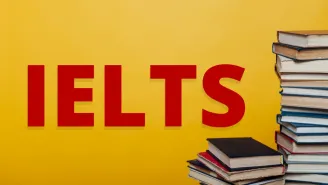Tea Time Reading Passage
Tea times Reading Passage
Paragraph A
The chances are that you have already drunk a cup or glass of tea today. Perhaps you are sipping one as you read this. Tea, now an everyday beverage in many parts of the world, has, over the centuries, been an important part of rituals of hospitality both in the home and in wider society.
Paragraph B
Tea originated in China, and in Eastern Asia, tea-making and drinking ceremonies have been popular for centuries. Tea was first shipped to North-Western Europe by English and Dutch maritime traders in the sixteenth century. At about the same time, a land route from the Far East, via Moscow, to Europe was opened up. Tea also figured in America’s bid for independence from British rule – the Boston Tea Party.
Paragraph C
As, over the last four hundred years, tea leaves became available throughout much of Asia and Europe, the ways in which tea was drunk changed. The Chinese considered the quality of the leaves and the ways in which they were cured all important. People in other cultures added new ingredients besides tea leaves and hot water. They drank tea with milk, sugar, spices like cinnamon and cardamom, and herbs such as mint or sage. The variations are endless. For example, in Western Sudan, on the edge of the Sahara Desert, sesame oil is added to milky tea on cold mornings. In England, tea, unlike coffee, acquired a reputation as a therapeutic drink that promoted health. Indeed, in European and Arab countries as well as In Persia and Russia, tea was praised for its restorative and health-giving properties. One Dutch physician, Cornelius Blankaart, advised that to maintain health, a minimum of eight to ten cups a day should be drunk and that up to 50 to 100 daily cups could be consumed safely.
Paragraph D
While European coffee houses were frequented by men discussing politics and closing business deals, respectable middle-class women stayed at home and held tea parties. When the price of tea fell in the nineteenth century, poor people took up the drink with enthusiasm. Different grades and blends of tea were sold to suit every pocket.
Paragraph E
Throughout the world today, few religious groups object to tea drinking. In Islamic cultures, where drinking alcohol is forbidden, tea and coffee consumption is an important part of social life. However, Seventh-Day Adventists, recognising the beverage as a drug containing the stimulant caffeine, frown upon the drinking of tea.
Paragraph F
Nomadic Bedouins are well known for their traditions of hospitality in the desert. According to Middle Eastern tradition, guests are served both tea and coffee from pots kept ready on the fires of guest tents where men of the family and male visitors gather. Cups of “bitter” cardamom coffee and glasses of sugared tea should be constantly refilled by the host.
Paragraph G
For over a thousand years, Arab traders have been bringing Islamic culture, including tea drinking, to northern and western Africa. Techniques of tea preparation have been adapted. In West African countries, such as Senegal and The Gambia, it is fashionable for young men to gather in small groups to brew Chinese “gun-powder” tea. The tea is boiled with large amounts of sugar for a long time.
Paragraph H
Tea drinking in India remains an important part of daily life. There, tea made entirely with milk is popular. “Chai” is made by boiling milk and adding tea, sugar, and some spices. This form of tea making has crossed the Indian Ocean and is also popular in East Africa, where tea is considered best when it is either very milky or made with water only. Curiously, this “milk or water” formula has been carried over to the preparation of instant coffee, which is served in cafes as either black or sprinkled on a cup of hot milk.
Paragraph I
In Britain, coffee drinking, particularly in the informal atmosphere of coffee shops, is currently in vogue. Yet, the convention of afternoon tea lingers. At conferences, it remains common practice to serve coffee in the morning and tea in the afternoon. Contemporary China, too, remains true to its long tradition. Delegates at conferences and seminars are served tea in cups with lids to keep the infusion hot. The cups are topped up throughout the proceedings. There are, as yet, no signs of coffee on such occasions.
Tea Time Reading Question and Answers
Discover exciting and informative IELTS reading answers about Tea time.






